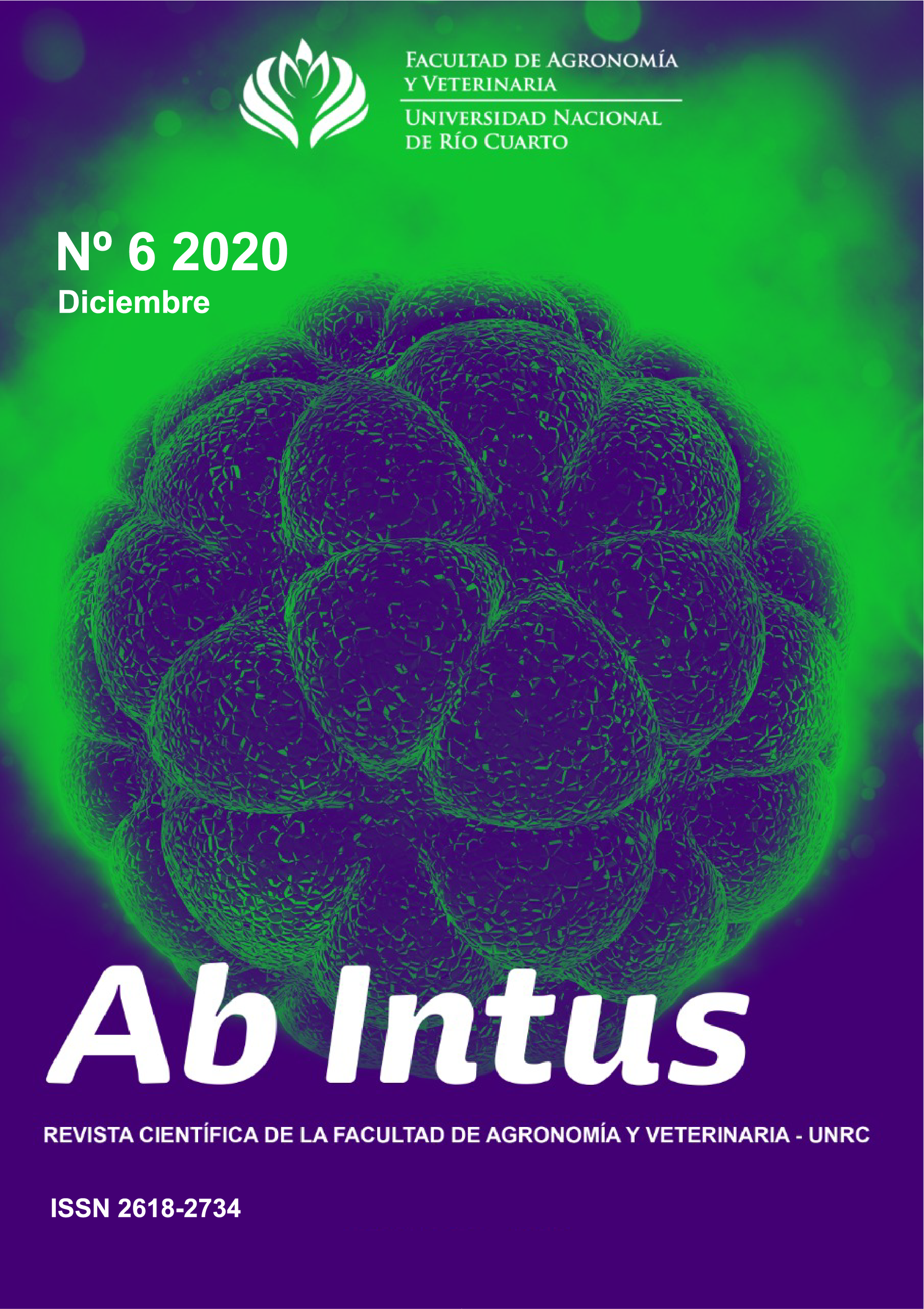Phenolic compounds and inhibition of oxidative stress of a methanolic extract of avocado seed (Persea americana Mill).
Abstract
Persea americana Mill, or simply avocado is one of the fruits with
the highest content of biactive compounds, where its seed, considered a waste
product, has a high antioxidant potential that can generate health benefits. The
objective of the study was to determine the concentration of total phenolic
compounds, flavonoids and to evaluate the antioxidant activity of an methanolic
extract of avocado seeds. An extract was prepared using 70% methanol and
one claimed that it served exclusively to buy the content of total phenols and
flavonoids. The Folin-Ciocalteu method, the colorimolic method proposed by
Marinova, and the oxidative stress test in Saccharomyces cerevisiae (biological
model) were used. The analysis showed a concentration of total phenols of 53.12
± 1.35 and flavonoids 38.22 ± 0.69 with statistical difference with the extract
used as control. In relation to the antioxidant activity, inhibition of the oxidative
stress induced in S. cerevisiae was observed by the extract. From being a waste
material, these results indicate that the avocado seed can be an alternative for
the consumption of bioactive compounds, which coincides with those reported
worldwide.
Downloads
References
Albarrán, G., Mendoza, E., Beltrán, J. M. (2014). Influence of concentration on the radiolytic decomposition of thiamine, riboflavin, and pyridoxine in aqueous solution. Revista Colombiana de Química.43 (3): 41-48.
Álvarez, E., De la Rosa, L., Amarowicz, R., Shahidi, F. (2012). Protective effect of fresh and processed Jalapeño and Serrano peppers against food lipid and human LDL cholesterol oxidation. Food Chemistry. 133: 827-834.
Block, G. (2009). The data support a role for antioxidants in reducing cancer risk. Nutrition. 50: 207-213.
Dabas, D., Shegog, R., Ziegler, G., Lambert, J. (2013). Avocado (Persea americana) seed as a source of bioactive phytochemicals. Current Pharmaceutical Design. 19(34): 6133-6140.
Fu, L., Xu, B.T., Xu, X.R., Gan, R.Y., Zhang, Y., Xia, E.Q., Li, H.B. (2011).Antioxidant capacities and total phenolic contents of 62 fruits. Food Chemistry. 129(1):345–350.
García, E., Fernández, I., Fuentes, A. (2016). Determinación de polifenoles totales por el método de Folin-Ciocalteu. Revista Colombiana Ciencias Químico Farmaceuticas.45 (1): 109-126.
Gan, R.Y, Li, H.B., Gunaratne, A., Sui, Z.Q., Corke, H. (2017). Effects of fermented edible seeds and their products on human health: Bioactive components and bioactivities. Food Scientific. 16:489–531.
Geering, A. (2018). A review of the status of Avocado sunblotch viroid in Australia. Australasian Plant Pathology. 47: 555-559.
Kosińska, A., Karamać, M., Estrella, I., Hernández, T., Bartolomé, B., Dykes, G. (2012). Phenolic Compound Profiles and Antioxidant Capacity of Persea americana Mill. Peels and Seeds of Two Varieties. Journal of Agriculture Food Chemistry. 60: 4613- 4619.
Lin, C., Chen, P., Hsieh, Y., Chu, S. (2014). Koelreuteria formosana extract impedes in vitro human LDL and prevents oxidised LDL-induced apoptosis in human umbilical vein endothelial cells. Food Chemistry. 146: 299–307.
Marinova, D., Ribarova, F., Atanassova, M. (2005).Total phenolics and total flavonoids in bulgarian fruits and vegetables. Journal of the University of Chemical Technology and Metallurgy.40 (3): 255-260.
Moreno, A., Dorantes, L., Galíndez, J., Guzmán, RI. (2003). Effect of different extraction methods on fatty acids, volatile compounds, and physical and chemical properties of avocado (Persea Americana Mill.) oil. Journal of Agricultural and Food Chemistry. 51: 2216-2221.
Pacheco Coello, F., Orosco-Vargas, C., Peraza-Marrero, M., Pinto-Catari, I., Ramirez-Azuaje, D. (2020). Effect of an extract of Hibiscus sabdariffa L., on oxidative stress induced in Saccharomyces cerevisiae. Ciencia, Ambiente y Clima, 3(1), 41-46.
Prietsch, RF., Monte, LG., Da Silva, FA., Beira, FT., Del Pino, FA., Campos, VF., Collares, T., Pinto, LS., Spanevello, RM., Gamaro, GD., Braganhol, E. (2014). Genistein induces apoptosis and autophagy in human breast MCF-7 cells by modulating the expression of proapoptotic factors and oxidative stress enzymes. Molecular Cell Biochemistry. 390: 235-242.
Reddy, M., Moodley, R., Jonnalagadda, SB. (2012). Fatty acid profile and elemental content of avocado (Persea americana Mill.) oil-effect of extraction methods. Journal of Environmental Science and Health, Part A. 47: 529-537.
Reyes-Luengas, A., Salinas-Moreno, Y., Ovando-Cruz, M., Arteaga-Garibay, R., Martínez-Peña, M. (2015).Análisis de ácidos fenólicos y actividad antioxidante de extractos acuosos de variedades de jamaica (Hibiscus Sabdariffa L.) con cálices de colores diversos. Agrociencia .49 (1): 277-290.
Rodríguez-Carpena, JG., Morcuende, D., Andrade, MJ., Kylli, P., Estévez, M. (2011). Avocado (Persea americana Mill.) phenolics, in vitro antioxidant and antimicrobial activities, and inhibition of lipid and protein oxidation in porcine patties. Journal of Agricultural and Food Chemistry. 59: 5625-5635.
Romaní, L., Enciso, E., Cárdenas, V., Condorhuamán, YM. (2017). Actividad antibacteriana de compuestos fenólicos de semillas de Persea americana Mill. “palta Hass” frente a Escherichia coli. Ciencia e Investigación. 20(2):19-22.
Singleton, VL. and Rossi, JA.(1965).Colorimetry of total phenolics with phosphomolybdic–phosphotungstic acid reagents. American Journal of Enology and Viticulture.16 (3): 144–158.
Valérico, E., Vilares, A., Campos, A., Pereira, P., Vasconcelos, V. (2014). Effects of microcystin-LR on Saccharomyces cerevisiae growth, oxidative stress and apoptosis. Toxicon. 90: 191-198
Vásquez, M. (2019). Composición proximal del contenido de polifenoles totales en extractos metanólicos de semillas de palta variedad Fuerte y Hass. Lima: Universidad Nacional de Trujillo. Tesis de pregrado
Vivero, A., Valenzuela, R., Valenzuela, A., Morales, G.(2019). Palta: compuestos bioactivos y sus potenciales beneficios en salud. Revista Chilena de Nutrición. 46(4): 491-498.
Downloads
Published
How to Cite
Issue
Section
License
Copyright (c) 2023 Ab Intus

This work is licensed under a Creative Commons Attribution-NonCommercial 4.0 International License.


















